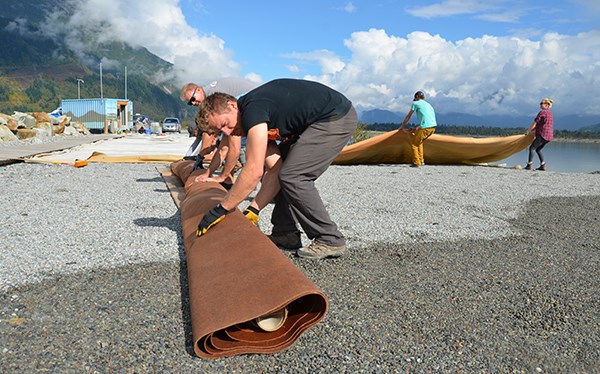It’s called the walk of shame.
It happens for different reasons – equipment fails, the wind dies or the kiteboarder is inexperienced – but it’s never a good feeling when you wash up on the Squamish Estuary and then make the lonely trek, barefoot and clad in a wetsuit, back out to the Spit.
My walk of shame held the added embarrassment of being covered in mud. Having failed to go upwind, I came to a halt on the sludge plains at low tide. I stood up, keeping my kite at 12 o’clock in the air. But like Bambi on ice, my feet slid out from beneath me. Next thing I knew, I was being dragged cowboy-style across the estuary by a runaway kite.
Today, that sort of thing doesn’t happen. For four months, from May 15 to Sept. 15, the Squamish Spit is staffed and managed by the Squamish Windsports Society (SWS). The SWS holds liability insurance to protect the Crown and the District of Squamish against damage, loss or injury. This is one of the conditions that permits the SWS to have access to the Spit to operate a windsports program. One of the SWS’s main objectives is to protect the estuary.
If someone’s kite goes down anywhere near the flats, within minutes, staff are by their side on one of the two jet skis. Besides ensuring safety, this prevents them from tromping on plants and disturbing wildlife.
It’s a side of the job SWS staff take seriously. This season alone, they spent 140 hours on jet skis helping 734 people. While not all that time was spent on ensuring kiters did not enter the estuary, you can bet a chunk did.
But here’s the twist: Even if it’s still warm in late September, the season officially ends Sept. 15. That time period was implemented in the 2007 Skwelwil’em Squamish Estuary Wildlife Management Area plan with feathered animals in mind. No one, including the windsport athletes, want to disturb nesting birds. By late September, most birds are spreading their wings for the long flight south.
Windsports enthusiasts, on the other hand, have not yet migrated to their kite-away-from-kite at Mexico’s La Ventana. Good weather lures them out to the Spit, despite there being no toilets, trash disposal or rescues, all of which disappears with the end of the official season.
Maybe it’s time to rethink the hardline schedule and preserve the environment as well as kiters’ sanity. Extended management would protect both riders and the estuary.



